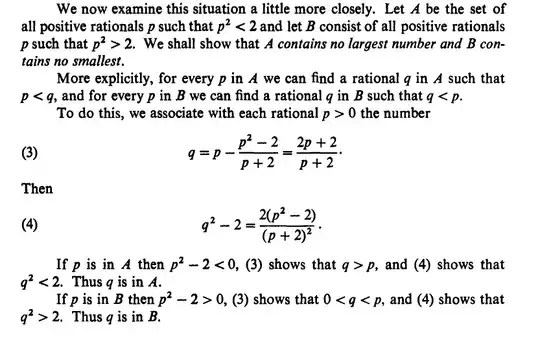I hope it was purely trial and error and there was no systematic way to arrive at this expression as the textbook didn't provide the work and I'm not able to see how one cooks this up systematically. For example, how would one go about cooking such an expression for showing that the set of rational numbers satisfying $p^2<3$ has no largest number ? I've tried this by replacing $2$ in the given expression by $3$. It doesn't work. Appreciate any ideas. Thanks !
Asked
Active
Viewed 62 times
0
-
That's Rudin, right? This is definitely a duplicate but I can't find it right now. – lhf Mar 15 '18 at 01:19
-
Looks I've found it :) Should I delete the q ? @lhf https://math.stackexchange.com/questions/141774/choice-of-q-in-baby-rudins-example-1-1 – AgentS Mar 15 '18 at 04:45
-
Actually, yours is a slightly different question because it asks for generalization. Let's leave it as is. – lhf Mar 15 '18 at 11:15
1 Answers
1
A nice proof.
Replace $2$ by $3$.
$(3)$ becomes $\displaystyle q=p-\frac{p^2-3}{p+3}=\frac{3p+3}{p+3}$
$(4)$ becomes $\displaystyle q^2-3=\frac{6(q^2-3)}{(q+3)^2}$
CY Aries
- 23,393
-
Ahh nice, Looking at my notes again I forgot to replace $2$ in the denominator.. Ty :) – AgentS Mar 15 '18 at 00:25
